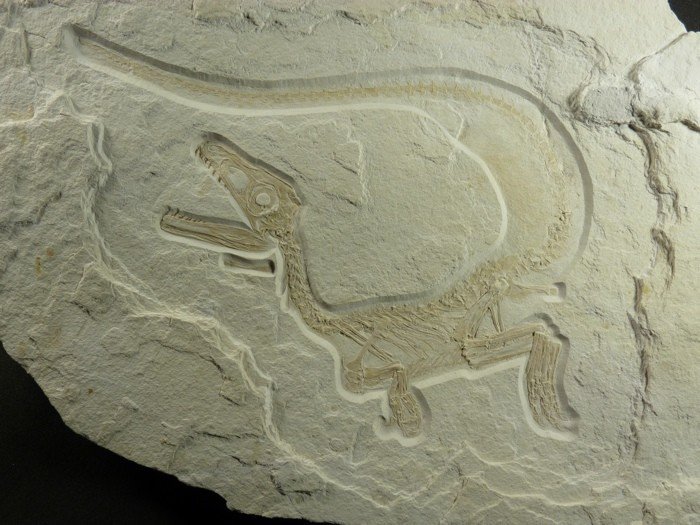New Species of Feathered Dinosaur Discovered

A new species of feathered dinosaurs has been discovered in southern Germany which scientists claim changes the perception of dinosaurs.
Scientists from the American Museum of Natural History have discovered fossils of a baby Sciurumimus albersdoerferi - a type of dinosaur that lived about 150 million years ago - in northern Bavaria in Germany. The fossils provide the first evidence of feathered theropod dinosaurs that are not closely related to birds.
"This is a surprising find from the cradle of feathered dinosaur work, the very formation where the first feathered dinosaur Archaeopteryx was collected over 150 years ago," said Mark Norell, chairman of the Division of Palaeontology at the American Museum of Natural History, in a statement.
Theropods are usually bipedal and most of them largely carnivorous dinosaurs. In recent years, scientists have discovered that many extinct theropods had feathers. Till now feathered dinosaurs were only found in theropods that are classified as coelurosaurs, a diverse group including animals like T-Rex and birds. But, now scientists have found that the new species of Sciurumimus also had features.
"All of the feathered predatory dinosaurs known so far represent close relatives of birds," said Oliver Rauhut, palaeontologist at the Bayerische Staatssammlung für Paläontologie und Geologie. "Sciurumimus is much more basal within the dinosaur family tree and thus indicates that all predatory dinosaurs had feathers."
Scientists had analysed the fossils of baby Sciurumimus and found that their whole body was covered with feathers. They also found that this species had a stunning bushy tail, just like a squirrel, besides large eyes.
Scientists also found that juvenile specimen of Sciurumimus are about 28 inches in length. It probably would have hunted insects and other small prey.
Scientists claim that further studies will help them know more about this species of dinosaurs.
"Everything we find these days shows just how deep in the family tree many characteristics of modern birds go, and just how bird-like these animals were," Norell said.
"At this point it will surprise no one if feather-like structures were present in the ancestors of all dinosaurs," he concluded.
© Copyright IBTimes 2025. All rights reserved.



















